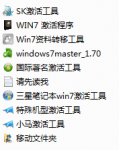SuperObject Delphi XE10.2.3测试可用
This project is not maintained!
SuperObject
What is JSON ?
- JSON (JavaScript Object Notation) is a lightweight data-interchange format.
- It is easy for humans to read and write.
- It is easy for machines to parse and generate.
- It is based on a subset of the JavaScript Programming Language, Standard ECMA-262 3rd Edition - December 1999.
- JSON is a text format that is completely language independent but uses conventions that are familiar to programmers.
- These properties make JSON an ideal data-interchange language.
- You can get more informations on json.org.
{
"name": "Jon Snow", /* this is a comment */
"dead": true,
"telephones": ["000000000", "111111111111"],
"age": 33,
"size": 1.83,
"adresses": [
{
"adress": "foo",
"city": "The wall",
"pc": 57000
},
{
"adress": "foo",
"city": "Winterfell",
"pc": 44000
}
]
}
Parsing a JSON data structure
var
obj: ISuperObject;
begin
obj := SO('{"foo": true}');
obj := TSuperObject.ParseString('{"foo": true}');
obj := TSuperObject.ParseStream(stream);
obj := TSuperObject.ParseFile(FileName);
end;Accessing data
There isn't individual datastructure for each supported data types. They are all an object: the ISuperObject.
val := obj.AsString; val := obj.AsInteger; val := obj.AsBoolean; val := obj.AsDouble; val := obj.AsArray; val := obj.AsObject; val := obj.AsMethod;
How to read a property value of an object ?
val := obj.AsObject.S['foo']; // get a string val := obj.AsObject.I['foo']; // get an Int64 val := obj.AsObject.B['foo']; // get a Boolean val := obj.AsObject.D['foo']; // get a Double val := obj.AsObject.O['foo']; // get an Object (default) val := obj.AsObject.M['foo']; // get a Method val := obj.AsObject.N['foo']; // get a null object
How to read a value from an array ?
// the advanced way val := obj.AsArray.S[0]; // get a string val := obj.AsArray.I[0]; // get an Int64 val := obj.AsArray.B[0]; // get a Boolean val := obj.AsArray.D[0]; // get a Double val := obj.AsArray.O[0]; // get an Object (default) val := obj.AsArray.M[0]; // get a Method val := obj.AsArray.N[0]; // get a null object
Using paths
Using paths is a very productive method to find an object when you know where is it. This is some usage cases:
obj['foo']; // get a property obj['123']; // get an item array obj['foo.list']; // get a property from an object obj['foo[123]']; // get an item array from an object obj['foo(1,2,3)']; // call a method obj['foo[]'] := value; // add an item array
you also can encapsulate paths:
obj := so('{"index": 1, "items": ["item 1", "item 2", "item 3"]}');
obj['items[index]'] // return "item 2"or recreate a new data structure from another:
obj := so('{"index": 1, "items": ["item 1", "item 2", "item 3"]}');
obj['{"item": items[index], "index": index}'] // return {"item": "item 2", "index": 1}Browsing data structure
Using Delphi enumerator.
Using Delphi enumerator you can browse item's array or property's object value in the same maner.
var item: ISuperObject; begin for item in obj['items'] do ...
you can also browse the keys and values of an object like this:
var
item: TSuperAvlEntry;
begin
for item in obj.AsObject do ...
begin
item.Name;
item.Value;
end;Browsing object properties without enumerator
var
item: TSuperObjectIter;
begin
if ObjectFindFirst(obj, item) then
repeat
item.key;
item.val;
until not ObjectFindNext(item);
ObjectFindClose(item);Browsing array items without enumerator
var
item: Integer;
begin
for item := 0 to obj.AsArray.Length - 1 do
obj.AsArray[item]RTTI & marshalling in Delphi 2010
type
TData = record
str: string;
int: Integer;
bool: Boolean;
flt: Double;
end;
var
ctx: TSuperRttiContext;
data: TData;
obj: ISuperObject;
begin
ctx := TSuperRttiContext.Create;
try
data := ctx.AsType<TData>(SO('{str: "foo", int: 123, bool: true, flt: 1.23}'));
obj := ctx.AsJson<TData>(data);
finally
ctx.Free;
end;
end;Saving data
obj.AsJSon(options); obj.SaveTo(stream); obj.SaveTo(filename);
Helpers
SO(['prop1', true, 'prop2', 123]); // return an object {"prop1": true, "prop2": 123}
SA([true, 123]); // return an array [true, 123]Non canonical forms
The SuperObject is able to parse non canonical forms.
// unquoted identifiers
SO('{foo: true}');
// unescaped or unquoted strings
SO('{собственность: bla bla bla}');
// excadecimal
SO('{foo: \xFF}');声明:本站所有文章,如无特殊说明或标注,均为本站原创发布。任何个人或组织,在未征得本站同意时,禁止复制、盗用、采集、发布本站内容到任何网站、书籍等各类媒体平台。如若本站内容侵犯了原著者的合法权益,可联系我们进行处理。



